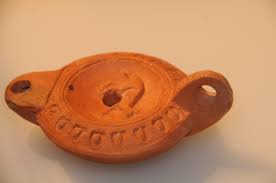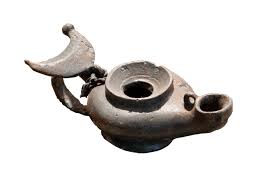Here are some facts about Ancient Roman Oil Lamps and clay lamps.
Lighting in ancient Roman homes
In the early Rome, artificial lighting was a common tern of decorating houses. As we use today, back in the 3rd and 4th century BC, the candles of bee wax or also called as tallow, were the cheapest means of illuminating houses in those days.

The candles hardly survived the excavations, but archeologists have found evidence of the use of candles for lighting. Ancient Roman oil lamps were the most commonly used means of lighting. These lamps were fueled with olive oil and other oils extracted from vegetables. These lamps were found in the archeological excavations.
Materials used to make ancient Roman oil lamps
Few of the ancient Roman oil lamps were made of metal. They were found in various elaborated designs and forms which included statuettes and numerous types of nozzles.

The most usually used material for Roman oil lamps was fired clay. Most of the small, comparatively inexpensive, cheap and simple clay lamps bore a single nozzle and hence had one flame.
Shapes on ancient Roman oil lamps
Majority of the clay lamps were designed using molds in workshops. Thus a huge mass of standardized products was available in the market. The most popular oil lamps were those which had a central disc.

They had a circular area typically with a diameter of around 4-6 cm. They had a filling-hole and were ornamented with pictorial motifs.
Designs on ancient Roman oil lamps
The decorations comprised pagan deities, genre scenes from everyday life, myths and legends, hunting, animal pictures and public entertainments like the combat of the gladiator, chariot-racing that were the favorites in late-Roman times.

The lamps were also decorated with some Christian symbolism that is seen in the Roman decorative arts.
Roman Oil Lamp Replica
The imitations or replicas of the lamps could be made with a technique called sSurmoulage. It included the use of an existing lamp as the model for producing the mold. This eliminated the effort of creating a hand-molded clay model.
Making of ancient Roman clay lamps
The manufacturing methods that were followed to make the clay lamps included the use of plaster molds. The mass to be produced and the volume of trade and worldwide distribution all result in the production of red-gloss wares like Arretine and Samian. The name stamps are still seen on some lamps found in the excavations.

The name of the artist was usually inscribed on the underside of the lamp. One of the well-known names in the makers of Roman oil lamps is that of Fortis. His Roman oil lamps were imitated outside his workshop in Italy. Branches of the workshops of Fortis were found the provinces.
In spite of the variety in basic lamp-shapes that consisted of an ovoid or a rounded body along with one or more nozzles for projecting oil, sometimes a handle was introduced in the design. The terracotta lamps found in the excavations had a variety of even more decorative forms.
Roman oil lamp for sale
The ancient Roman oil lamps were molded to depict animal poses, heads of grotesque and the feet and few other shapes. These oil lamps are typically known as plastic lamps. Plastic here means molded. Ancient Roman oil lamps are also available for sale in the markets today.



